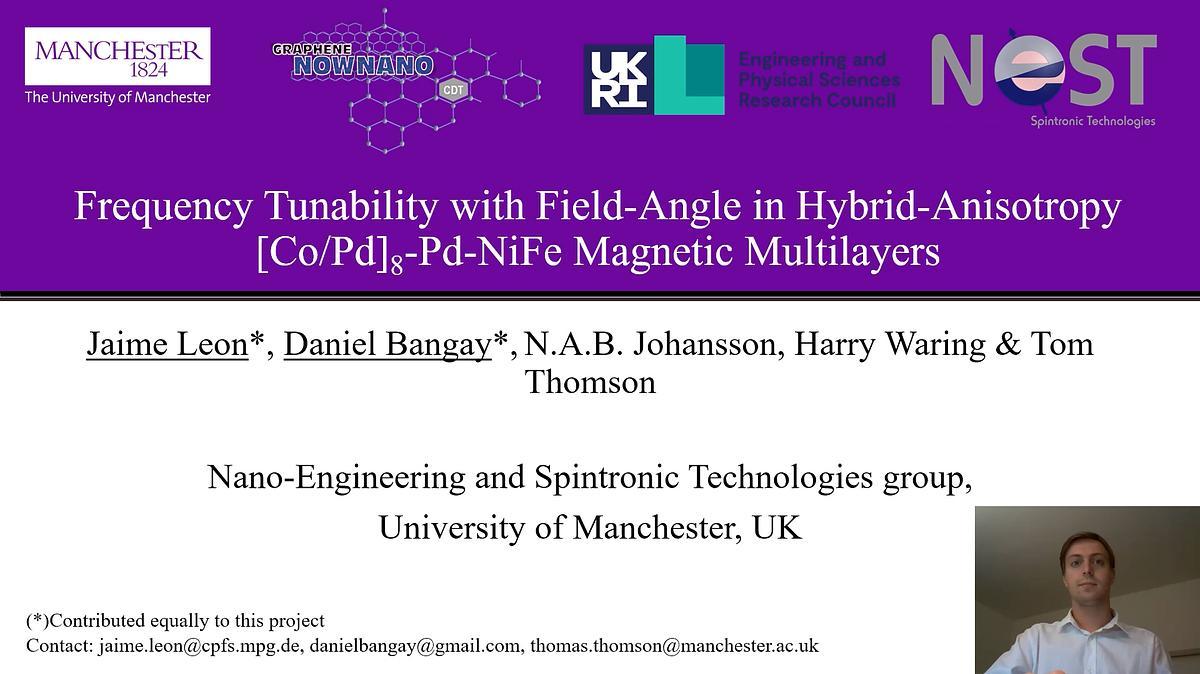
Premium content
Access to this content requires a subscription. You must be a premium user to view this content.

technical paper
Frequency Tunability with Field Angle in Hybrid
Hybrid anisotropy heterostructures consist of two exchange coupled magnetic layers with in-plane and out-of-plane magnetic anisotropy where the exchange coupling is controlled by a non-magnetic spacer layer 1,2, Fig.1. Previous studies have investigated the quasi-static magnetic properties of these structures using magnetometry and polarised neutron reflectivity (PNR) to determine the magnitude and extent of the coupling in these layer 3. In this work we extend the study of hybrid anisotropy thin films to include the dynamic properties of these structures. We undertake angle dependent FMR measurements using VNA-FMR where the angle of the applied magnetic field can be varied whilst keeping the waveguide in a fixed position. The experimental details of our measurement are identical to those report in 4 except that we replace the Picoprobe waveguide with a NanOsc Coplanar Waveguide v4.
Our results demonstrate that the angle dependence of the resonance frequency depends on the degree of coupling between the two magnetic layers. In systems with significant exchange coupling (e.g.: Pd spacer thickness of 1.2 & 2 nm) we observe a dominant ‘acoustic’ mode which shows a maximum frequency for an applied field angle of approximately 40o to the sample plane, Fig.2. The increase in frequency is ~25% for an applied field of 6 kOe. To further understand this effect, we have conducted micro-magnetic simulations using MuMax3 5 which are able to reproduce the key features of the experimental results which will be presented in the full paper for spacer thicknesses of 0, 1.2, 2, 4, 6 and 100 nm). This shows that the angle of the applied field may be used to tune the resonance response of these materials over a significant frequency range.

